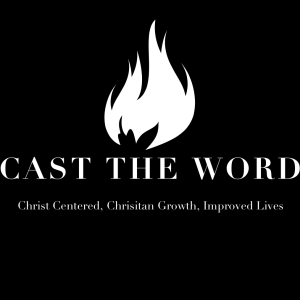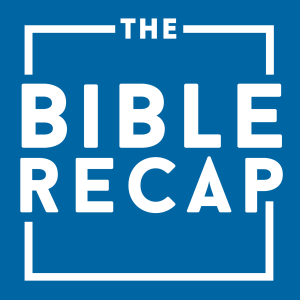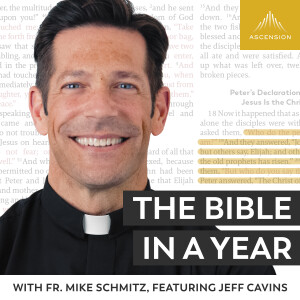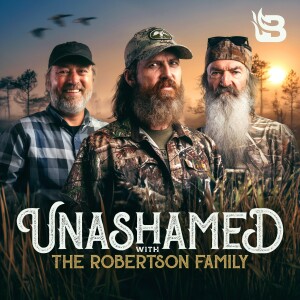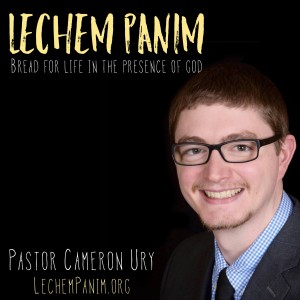

Lechem Panim #11 ”The Bread of The Presence” (Leviticus 24:5-9) Pastor Cameron Ury
Our scripture today comes from Leviticus 24:5-9. It reads….
5 “Take the finest flour and bake twelve loaves of bread, using two-tenths of an ephah[a] for each loaf. 6 Arrange them in two stacks, six in each stack, on the table of pure gold before the Lord. 7 By each stack put some pure incense as a memorial[b] portion to represent the bread and to be a food offering presented to the Lord. 8 This bread is to be set out before the Lord regularly, Sabbath after Sabbath, on behalf of the Israelites, as a lasting covenant. 9 It belongs to Aaron and his sons, who are to eat it in the sanctuary area, because it is a most holy part of their perpetual share of the food offerings presented to the Lord.”
We have been talking in recent weeks about the Tabernacle; the tent God commanded Israel to set up in the wilderness as a place where He might dwell among them. And in the structure and furnishings of the temple God was giving to His people a picture of how they might relate to Him in the present as they looked forward to a future Messiah; one who would fulfill each aspect of the Temple that pointed forwards to Him. And our journey began with an altar (picturing our need for a sacrifice to be offered for our sin). After that we come to a wash basin (which symbolizes our need for cleansing). Then last week we moved from the outer courtyard into the tent itself (the holy place) and encountered on our left a golden lampstand, symbolizing both How God is the source of all Light (spiritual and physical) and how that light was actualized in Jesus, who revealed Himself to be the Light of the World.
But today we turn our attention to the piece of furniture immediately across from the golden lampstand, which would be immediately to our right as we enter the tent. And that is a golden table upon which rested 12 baked loaves of bread called the Lechem Panim (the bread of the presence; or shewbread). These loaves of bread were arranged in two stacks of six (no doubt representing the twelve tribes of Israel) and were anointed with oil. After it was put out each Sabbath, it would remain for a week until the next Sabbath, when it was eaten by the priests after being replaced with fresh bread. So in the Tabernacle there was to be bread continually set before the Lord.
Now there are various interpretations as to the meaning and symbolism behind this bread as well as various traditions that suggest the bread was touched by the miraculous. For instance, it is believed by some Rabbis that this bread remained at the end of the week exactly it had been when it was first placed on the table. It would still be warm (or at least fresh) when the priests would eventually come to eat it. Now we don’t know this; and some of this is no doubt legend (as it is not recorded in scripture). But what we do know is that this table and the shewbread offered upon it was important to God. It was considered (as verse 9 says) a most holy part of Aaron and his sons’ perpetual share of the food offerings presented to the Lord.
Now a table is a place of fellowship. To eat with somebody (especially in Jewish culture) is to share an intimacy of fellowship with them. And so God may here be inviting His people to join in fellowship with Him. But a table is also a place of reconciliation. It’s interesting, in Jewish culture if there is enmity between two party’s and reconciliation is sought, restoration of that relationship is not considered complete until both parties have eaten together; it is a visual act to show that fellowship has been restored. That is why, in the story of Zacchaeus, Jesus invites Himself to Zacchaeus’ house. He is eating with Zacchaeus to show to him (and to everyone else who is watching) that reconciliation between He and Zacchaeus had been made that day. And so here in the Tabernacle we have (after the sacrifice and after the cleansing) a table of fellowship between God and man where God may be giving Israel a picture of the restoration and forgiveness that will come to them in and through an even greater bread; the Bread of Life. So this table of the bread of the presence was a visual reminder of the covenant God had made with His people. That is also why it may also be a foreshadowing of the future marriage supper of the Lamb that those who trust in Christ will experience in heaven, a feast of food to consummate the reconciliation of God with mankind; those who have received His Son, the Bread of Life. Those who receive the Bread of Life below get to partake of that feast in heaven.
Now I am a somewhat of a bread fanatic. I love carbs and I love bread, as I am sure many of you do as well. But there are many who try to stay away from bread in our day and age (and sometimes for good reason). I recently read a cartoon depicting what Jesus’ feeding of the ten thousand would probably look like in our modern day and age. Jesus is standing on a hill with a loaf and a fish, holding them out to a hungry crowd (supposedly after having multiplied the the boy’s loaves and fish). And yet the people have a look of dissatisfaction on their faces. One says that he must bow out because he is a vegan; another asks if the fish Jesus is offering has been tested for mercury, and a third person asks if the bread is gluten-free.
Now in our day and age we worry about things like that; and (frankly) we have other options. And though other foods were available (and are often included in the concept of the word “bread”) bread itself was essential in the ancient world. It was your sustenance; what you lived on. When Jesus calls Himself the Bread of Life in John chapter 6, He means that He is the source of both our physical and spiritual sustenance. And in saying this Jesus seems to those who heard Him then (and even to many today) to be a little strange; because it seems like what Jesus is saying is that He expects that we consider Him to be the center of our world. He wants to be as important to us as water (I am the living water), as bread (I am the Bread of Iife, as our conception of truth (I am the truth) and the very source of our life (I am the Life). He demands to be the center of our time, the center of our desires, the center of our sense of purpose, and the center of our hopes for the future. And Jesus give a remarkable demonstration of this in His 40 day period of temptation in the wilderness in which He denies Himself bread (physical bread) in order to pursue the more important spiritual bread of obedience to the Father.
And that is a fundamental concept we cannot miss. Bread in scripture is very often connected with obedience to God. It says in John 4:34 (ESV) that Jesus said to them, “My food is to do the will of him who sent me and to accomplish his work.
And often in Israel’s history where we find a lack of obedience, we also find a lack of bread. You will remember that in the latter half of the book of Judges God sends a famine upon Israel because of her idolatry. And the story of Ruth takes place during that time. The family of man named Elimelech is affected by it. And so he decides to lead his family away from Israel to Moab where they may have hope for survival. But the city they were from in Israel was Bethlehem, the future birthplace of Jesus. And Bethlehem actually comes from two Hebrew words; “Bet” meaning house, which is why Bethel (Bet and “El”, the Hebrew word for God combined mean house of God.) And then you have “lechem” which is bread. And so Bethlehem means house of bread. Now you have to catch the irony of this because Elimelech and his family are leaving the Bethlehem, the house of bread, because the house is empty; there is no bread. And yet in and throughout the book of Ruth we find that as Elimelech’s wife Naomi and her daughter in law Ruth return to Bethlehem after the rest of Elimelech’s family has died, God’s plan of redemption is still in motion. God reveals to Naomi and to Ruth that His love and faithfulness has not ended and that He still means to provide for them. And His fulfilling their need for a redeem is a picture of a redemption He was still committed to for all of Israel. And in fact He make Ruth a part of that, as she becomes the one through whom the line of King David would come and eventually the Messiah. And the Messiah (the Bread of Life) would be born where? Bethlehem; the house of bread. Where else? The house would become full again.
I don’t know where you are today in your own walk with the Lord. Maybe you are going through a difficult time; a season of spiritual famine and you want to know if God has abandoned you. It is easy to feel that way. And yet we find in the stories of the various heroes of Israel (people like Moses; people like Ruth; people like David) that those times we felt God the most distant, He was actually the closest, moving (often times unseen) to meet our physical and spiritual needs.
And God’s central desire is that each and every one of us might have our deepest need (our spiritual need) met in and through His Son Jesus Christ; the Bread of Life. It’s interesting, the Hebrew phrase that we translate “bread of the presence” (Lechem Panim) is actually in the Hebrew literally translated “Bread of the Faces”. The faces of God? The faces of the 12 tribes of Israel? Probably both. We know that God spoke to Moses face to face; the Hebrew is actually “mouth to mouth”; breath to breath; they shared the same air. That is the picture that is given to us of the fellowship they shared. And what I believe the “bread of the faces” really drove home for the Israelites was this; there is no greater joy; no greater sustenance; no greater source of fulfillment than abiding before the face of God in intimate fellowship with Him. Your Bread of Life is found in the presence of God. And in Jesus (the Bread of Life) we gain access to that fellowship; to that table of reconciliation with God.
And I want to tell you today that no matter who you are or what you have done. There is a table of fellowship that God has provided for you. And it is not something you need to work or strive to make yourself worthy for. All you have to do is come. In the bread of life passage in John chapter 6 Jesus says this:
27 Do not work for the food that perishes, but for the food that endures to eternal life, which the Son of Man will give to you. For on him God the Father has set his seal.” 28 Then they said to him, “What must we do, to be doing the works of God?” 29 Jesus answered them, “This is the work of God, that you believe in him whom he has sent.” (John 6:27-29 ESV)
Belief in Christ (an active belief; a choosing to follow Christ) is all that is necessary for salvation. In ancient paganism man would offer the gods food in order to appease their anger in order that they might not be destroyed by them. And yet here in the Tabernacle is given the reversal of all of that; as God gives us a picture of how He will provide the bread from heaven (the true bread) so that we might eat of Him and have life. At the last supper rather than demanding a sacrifice from us, we see in and through Christ’s breaking the bread, what He was saying was that He (the God of the universe) was going to offer Himself as a sacrifice for them and for us. And all we have to do is come to Him and partake of Him. Have you partaken of Him. Have you accepted His invitation to come and be reconciled to Him at His table? If not, that is available to you. All you have to do is ask; and the Bread of Life will fill you with His presence and in that presence you will have life and have it abundantly. Receive that life today. Amen
More Episodes
All Episodes>>You may also like
Creat Yourt Podcast In Minutes
- Full-featured podcast site
- Unlimited storage and bandwidth
- Comprehensive podcast stats
- Distribute to Apple Podcasts, Spotify, and more
- Make money with your podcast



